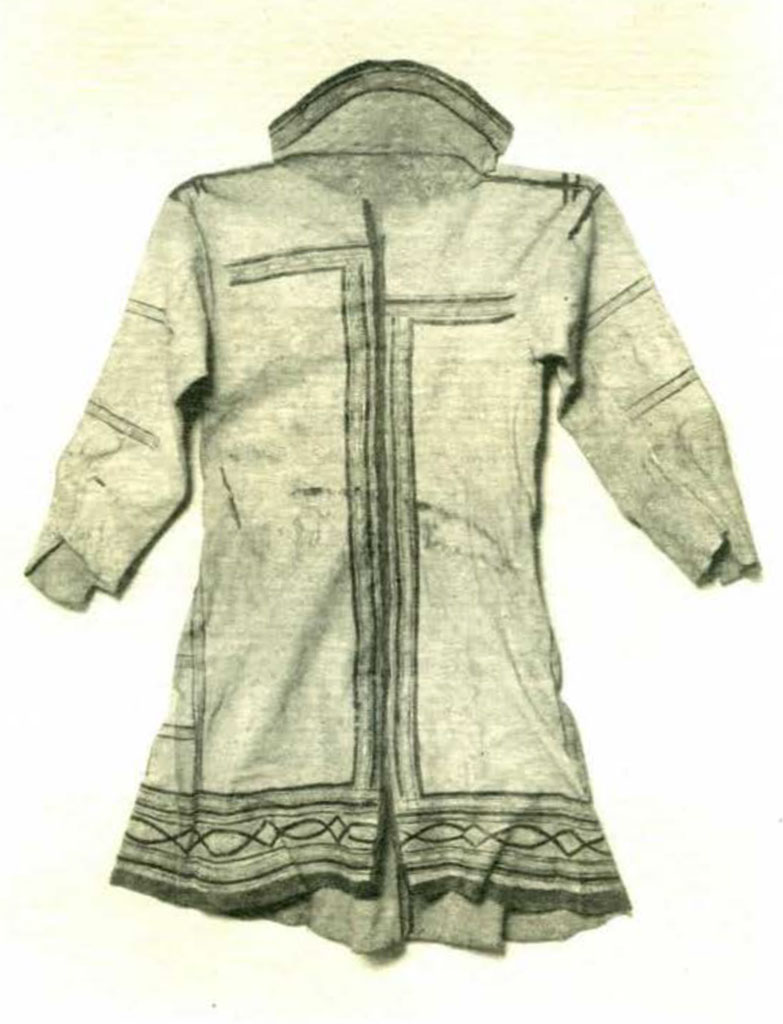AMONG the most interesting objects in a collection recently acquired from the Naskapi Indians of northern Labrador are the robes, which are made of tanned caribou hide painted with designs, in red, blue and yellow, in which curvilinear elements, especially the double curve, play a large part. One of these robes is shown in Plate XIII.

Museum Object Number: 30-3-3
The Naskapi tribe is of great ethnological importance, since it is the last remnant of the great Algonkian linguistic stock which includes the Delaware, the Mohegan and other tribes who occupied the Atlantic seaboard in the days of the first European settlements, and who have either disappeared or have become entirely civilized. It is, therefore, from a study of the Naskapi that most light can be thrown on the former culture of these historically important tribes.
The Museum’s collection was secured from the Barren Ground band of the Naskapi who occupy the northern extremities of the Labrador Peninsula and arc consequently the group which remains the most primitive and least affected by white influence. Their sole contact with civilization is at the small, scattered trading posts on the coast, where they appear once or twice a year to barter the furs that they have gathered in the interior. During the rest of the year, they lead a simple, rigorous existence, hunting and fishing in the desolate woods on the edge of the barren grounds. The establishment of a trading post in their territory some fifteen years ago, has resulted in their adoption of many of the elements of modern life, and the inevitable introduction of the diseases of civilization has reduced their number to hardly more than fifty at the present time. It is probable that the extinction of their primitive culture, if not their entire group, is a question of only a few years; a collection illustrative of this culture is, therefore, of great value.
J.A.M.

